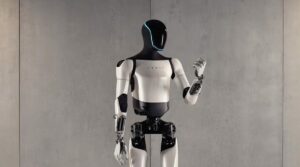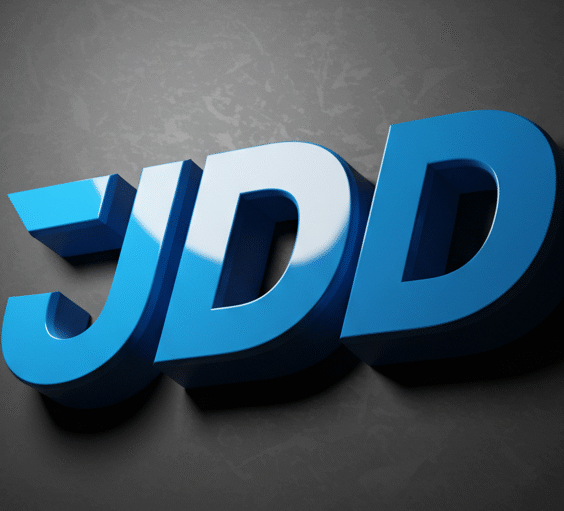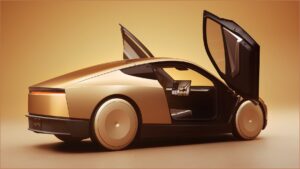All About Tesla Autonomous Driving: The Past, Present, and Future of AI Technology and Robotaxi Operation Cases
Tesla and AI, the Revolution in Autonomous Driving
Tesla has established itself as a pioneer in artificial intelligence (AI) and autonomous driving technology, beyond being a simple electric car manufacturer. Led by Elon Musk, this innovative company is redefining the future of transportation through its Full Self-Driving (FSD) and robotaxi projects. In this article, we comprehensively examine the evolution of Tesla’s autonomous driving technology, the reality of its latest robotaxi, the CyberCab, and the future prospects for AI-based mobility.

1. The Birth of Tesla Autonomous Driving: A Journey That Started with Rule-Based Algorithms
Back in 2014, when Tesla first introduced **Autopilot** to the world, autonomous driving was a dream. At the time, the technology was Level 2 and required constant driver supervision.
The foundation of early technology
Hardware configuration: It recognized the vehicle's surroundings using a triple combination of cameras, radar, and ultrasonic sensors, and relied heavily on the Mobileye chipset and software in particular.
Software Approach: Early autopilots used mainly **rule-based algorithms** instead of complex AI. Basic driving logic, such as staying in a lane and maintaining a safe distance from the car in front, was programmed.
Limitations: Functionality was severely limited in complex urban environments or unpredictable intersections, and frequent driver intervention was required. This was still a long way from true autonomous driving.
2. Tesla Autonomous Driving Today: A Leap Forward in Vision-Based AI
Tesla's current autonomous driving technology FSD(Full Self-Driving) v12.4.2 is a significant evolution from Level 2+ to near Level 3 performance, with a 2024 software update.
Innovative approach
Pure vision-based strategy: Tesla boldly eschews the LiDAR sensor that competitors rely on, and sticks to an approach that uses only eight high-performance cameras to perceive the environment. This camera data is converted into 3D vector space and analyzed in real time.
End-to-end learning system: FSD v12 completely breaks away from traditional rule-based coding and adopts a self-learning system that utilizes deep learning and neural networks. Real-world driving data collected from approximately 1 million Tesla vehicles is analyzed by the Dojo supercomputer to precisely mimic human driving patterns.
Advanced Hardware: Tesla’s self-developed HW4/AI4 chip delivers incredible performance, capable of processing 36TB of data per second, enabling reliable autonomous driving not only on highways but also in complex urban environments.
Enhanced Safety: The 2024 update further enhances user safety and convenience with parental controls, adaptive headlights, and an advanced seatbelt warning system.
Notable achievements
The latest FSD v12.4.2 significantly reduces the need for driver intervention, especially in complex urban environments. It also provides an important stepping stone for global market expansion by obtaining official testing approval from the Chinese government.
3. Tesla Robotaxi: The emergence of ‘cybercaps’ and a blueprint for future mobility
Tesla's robotaxi project aims to ultimately commercialize autonomous driving technology. In October 2024, Tesla finally unveiled a robotaxi prototype called the 'CyberCab'.
Cybercap's innovative features
Fully autonomous: The Cybercab is a fully autonomous vehicle without pedals or steering wheels, and operates on Tesla’s latest FSD software. It uses eight cameras and an AI neural network to plan its path and respond in real time to complex road conditions.
Futuristic Design: It features a futuristic design with two doors that open on both sides like wings, and the interior is designed as a comfortable, passenger-centered space.
Economical Price: Elon Musk announced that the CyberCap will cost less than $30,000, which is cheaper than Tesla's current flagship model, the base Model 3 ($42,000).
Platform Integration: We are building an integrated platform that will allow passengers to input their destinations through the Tesla app, automatically dispatching vehicles and calculating the optimal route.
Energy Efficiency: Adopting 4680 battery cells, it provides high energy density and long driving range, while minimizing operating costs.
Commercialization Plans and Tasks
Launch Schedule: Originally scheduled for a 2020 launch, the robotaxi has been delayed several times and is now scheduled to begin mass production by 2026. Elon Musk has said that “production will begin before 2027.”
RoboVan: Tesla also unveiled a 'RoboVan' concept vehicle that can accommodate up to 20 passengers alongside the CyberCap, an important attempt to merge public transportation and autonomous driving.
Market Competition: Google subsidiary Waymo already operates a lidar-based self-driving taxi service in some areas, but Tesla is seeking to differentiate itself with a purely AI-based approach.
Regulatory compliance: Efforts to meet autonomous driving laws and safety standards in each country are ongoing and will be key to global expansion.

4. The Future of Tesla AI: A Vision Beyond Autonomous Driving
Tesla's use of AI extends beyond autonomous driving to robotics, energy systems, and infotainment.
The ultimate evolution of autonomous driving technology
Level 5 Full Autonomy: Tesla aims to achieve Level 5 full autonomy between 2025 and 2030. To achieve this, the company is increasing the computing power of its Dojo supercomputer to 1.1 exaflops and developing the next-generation D1 chip.
Global Expansion: We plan to expand FSD testing and robotaxi services in key markets such as China, Europe, and Southeast Asia, and are developing optimized software for each region's road environment and regulations.
Expansion of the robotaxi ecosystem
Innovative Revenue Model: Robotaxis will go beyond simple transportation and operate as a Mobility as a Service (MaaS), providing new revenue opportunities for vehicle owners via the Tesla network.
Innovation in urban transportation: Robotaxis are expected to contribute to easing traffic congestion, improving mobility for the elderly and disabled, and creating an environmentally friendly transportation system.
Diversification of AI technology
Tesla Bot (Optimus): Optimus, a humanoid robot that uses autonomous driving technology, has been steadily developing since its first public release in 2022, and is currently under development with the goal of performing factory work and home support roles after 2025.
In-Car Infotainment: Tesla’s AI has integrated with streaming services like YouTube Music and Amazon Music, and recently enhanced the user experience with its own AI chatbot, Grok.
Energy Optimization: AI maximizes the efficiency of Tesla’s energy solutions, such as Powerwall and Solar Roof, and contributes to building a sustainable energy ecosystem.
Challenges faced
Regulation and Safety: The widespread commercialization of autonomous driving technology relies heavily on regulatory approval and safety validation in each country. The 2024 recall request from the U.S. National Highway Traffic Safety Administration (NHTSA) for seat belt warning systems is an example of this challenge.
Intensifying market competition: Technological advancements and price competition from traditional automakers and startups such as Waymo, BYD, Hyundai, and Toyota are challenging Tesla’s market dominance.
Conclusion: Tesla AI at the center of the mobility revolution
Tesla's autonomous driving technology has evolved from a simple rule-based system in the early days to an innovative platform centered on AI neural networks. The robotaxi vision embodied in the 'Cybercap' has the potential to fundamentally change the paradigm of urban transportation, and is moving one step closer to commercialization through verification tests and global expansion.
Tesla is designing an AI-driven future that will lead to Level 5 full autonomy, humanoid robots, and integrated energy systems. Despite numerous challenges, Tesla’s innovations are redefining the future of mobility and opening new horizons for AI and sustainable transportation.
References:
Tesla Official Website
Media reports including BBC, Electronic Times, and ZDNet
Korea & Company, IRS Global, Hankyoreh, Kagai Research Report
Elon Musk X (formerly Twitter) officially announced

